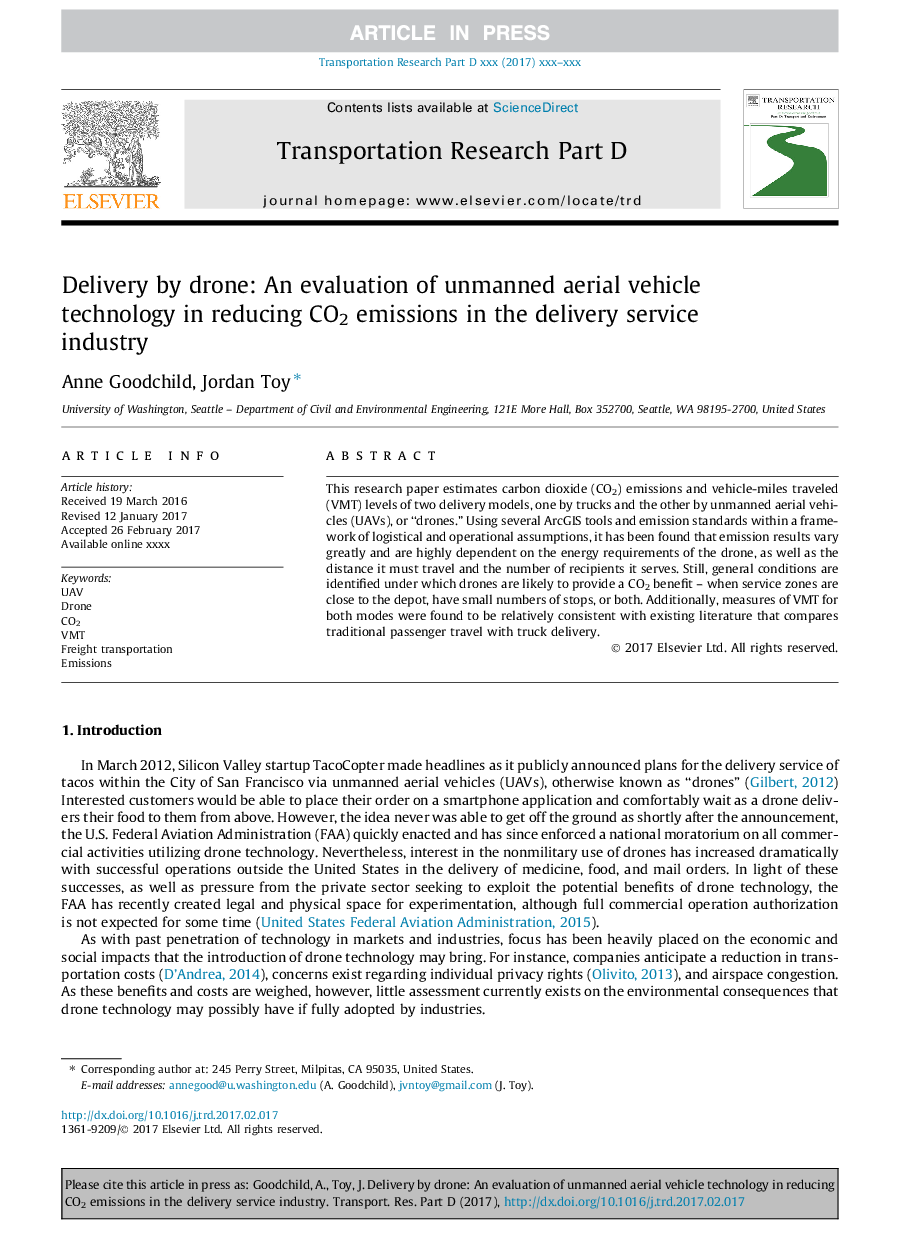| Article ID | Journal | Published Year | Pages | File Type |
|---|---|---|---|---|
| 7498940 | Transportation Research Part D: Transport and Environment | 2018 | 10 Pages |
Abstract
This research paper estimates carbon dioxide (CO2) emissions and vehicle-miles traveled (VMT) levels of two delivery models, one by trucks and the other by unmanned aerial vehicles (UAVs), or “drones.” Using several ArcGIS tools and emission standards within a framework of logistical and operational assumptions, it has been found that emission results vary greatly and are highly dependent on the energy requirements of the drone, as well as the distance it must travel and the number of recipients it serves. Still, general conditions are identified under which drones are likely to provide a CO2 benefit - when service zones are close to the depot, have small numbers of stops, or both. Additionally, measures of VMT for both modes were found to be relatively consistent with existing literature that compares traditional passenger travel with truck delivery.
Related Topics
Life Sciences
Environmental Science
Environmental Science (General)
Authors
Anne Goodchild, Jordan Toy,
